Admit it: you’ve walked past the fruit section in a Japanese supermarket before, only to slow down to ogle at them flawless Japanese strawberries.
It’s almost common knowledge that Japanese fruits are in a league of their own – unblemished, juicy and of consistently high quality.
If you ask me, it’s also why the fruits are typically so expensive (I mean, you pay for what you get right?).
But what other factors decide its price and what makes one of its most popular products – the Japanese strawberry – more expensive than its counterparts?
We spoke to Ishino, who works at the Kumamoto Prefectural Sales Division of the Kumamoto Prefecture Office in Japan, to find out.
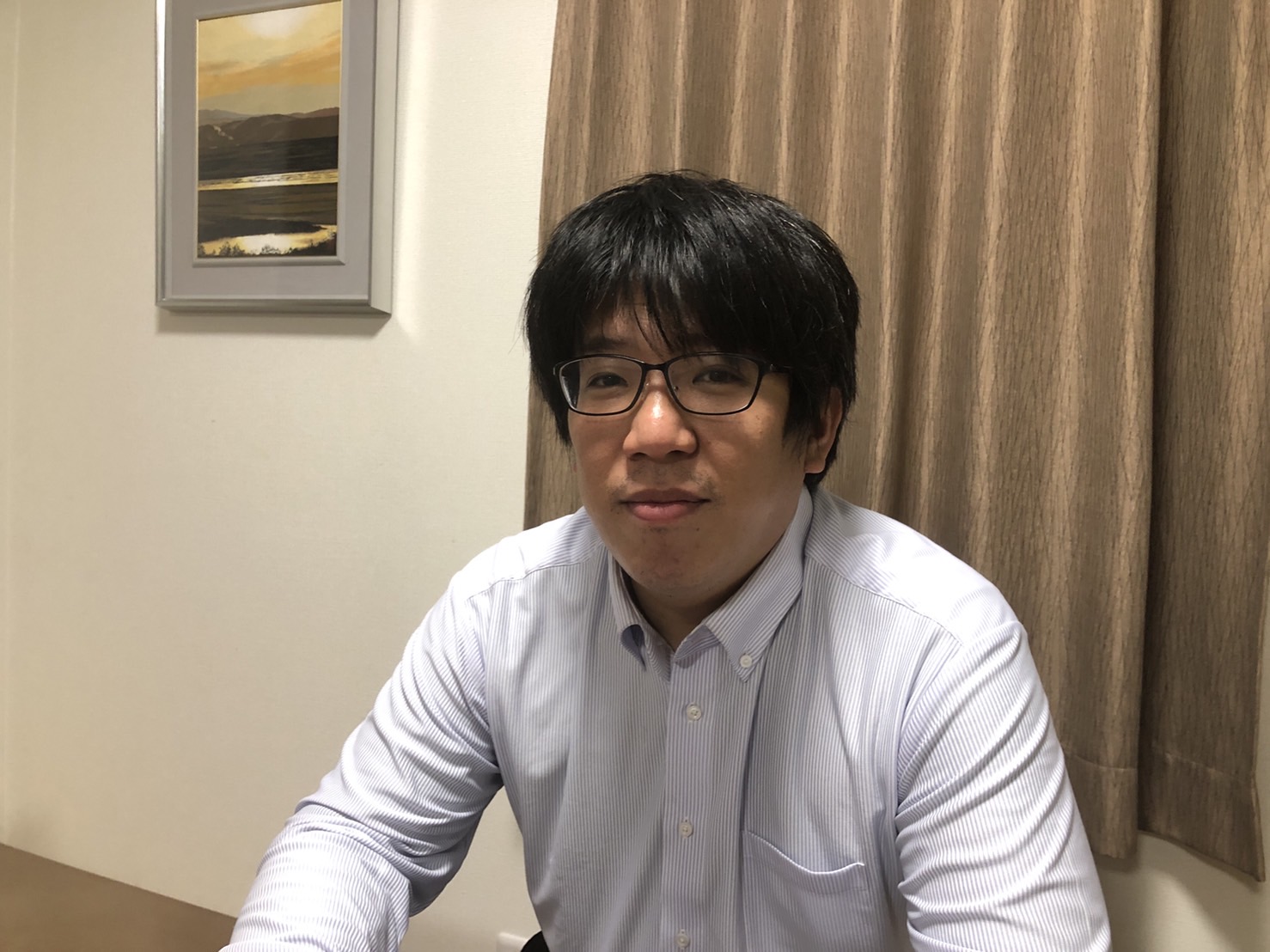 Mr Ishino of the Kumamoto Prefectural Sales Channel Expansion Business Division of the Kumamoto Prefecture Office.
Mr Ishino of the Kumamoto Prefectural Sales Channel Expansion Business Division of the Kumamoto Prefecture Office.
Kumamoto, one of the leading agricultural regions in central Kyushu, Japan, is best known for its fruits and vegetables as well as livestock.
Quality control, from cultivation to distribution
When it comes to producing Japanese fruits, extra care is taken to ensure the fruit’s quality at every step of the way.
During picking, each individual fruit “goes through a very stringent selection process by the human eye, before getting packed and sent off for delivery”, Ishino shared.
“Factors such as the size, shape, and whether the product has any bruises, are taken into consideration.”
In the case of “non-standard” products (colour, deformation, other flaws), the fruits are usually returned to the farm.
Beyond the production side, the higher unit price stems from “necessary costs” in intermediate distribution when sold abroad.
“It’s certainly true that Japanese fruit can be more expensive than fruit produced and sold in Singapore. This is as it is imported on planes from Japanese farms 5,200 km away, all while maintaining a certain standard of freshness", explained Ishino.
Taking into account the efforts of farmers
The price also takes into account the huge amount of time and effort invested by strawberry farmers – about 1,700 hours per year per 1,000 square metres.
At farms, strawberries are carefully monitored to ensure that they are growing well, with the optimal type of fertiliser and right temperature.
The strawberries are subsequently sorted by hand according to colour and shape, and then carefully packed to prevent them from being crushed.
Ishino shared that this attention to detail is even extended to the packaging, which is designed to “catch the eye of the consumer and showcase the strawberries inside”.
“Japanese produce at its core is all about its taste and outward appearance.”
So, how are Japanese strawberries graded?
So say you wanted to buy Japanese strawberries (because they’re the most affordably priced at about 600-1200 yen per packet (S$7 - S$14) in a supermarket) – how can you know whether they’re truly of superior quality, or not?
According to Ishino, Japanese strawberries are typically graded based on their size, shape and sugar content, amongst other factors.
What makes a strawberry a cut above the rest, is a good balance between its sweetness and acidity.
Those that are the most popular are usually also sweeter.
Some examples include the 'Yūbeni' strawberries from the Kumamoto prefecture, as well as other varieties, such as the 'Koiminori', 'Kaorino', and 'Benihoppe' strawberries.
All are cultivated due to the “abundant natural resources and freshwater in the region”, elaborated Ishino.
The price of the strawberries really depends on the time of the year, with the strawberry season generally occurring between December to March.
For supermarkets in Japan, a packet of strawberries typically costs between 600 to 1200 yen (about S$7 to S$14).
What makes the Kumamoto strawberries special
The ‘Yūbeni’ strawberry, in particular, was cultivated at Kumamoto’s prefectural testing institute for several years.
It is considered to be one of the S-tier (which are of higher quality) Japanese strawberries of higher quality.
The average ‘Yūbeni’ strawberry is defined by its large, conical shape and strong colour – scarlet red.
Aroma wise, according to Ishino, the greenhouses that the ‘Yūbeni’ strawberries are cultivated in typically smell very fragrant and sweet.
A slightly lower acidity also gives the ‘Yūbeni’ strawberry a good balance of sweet and tart, resulting in an overall quality that is higher but much more expensive.
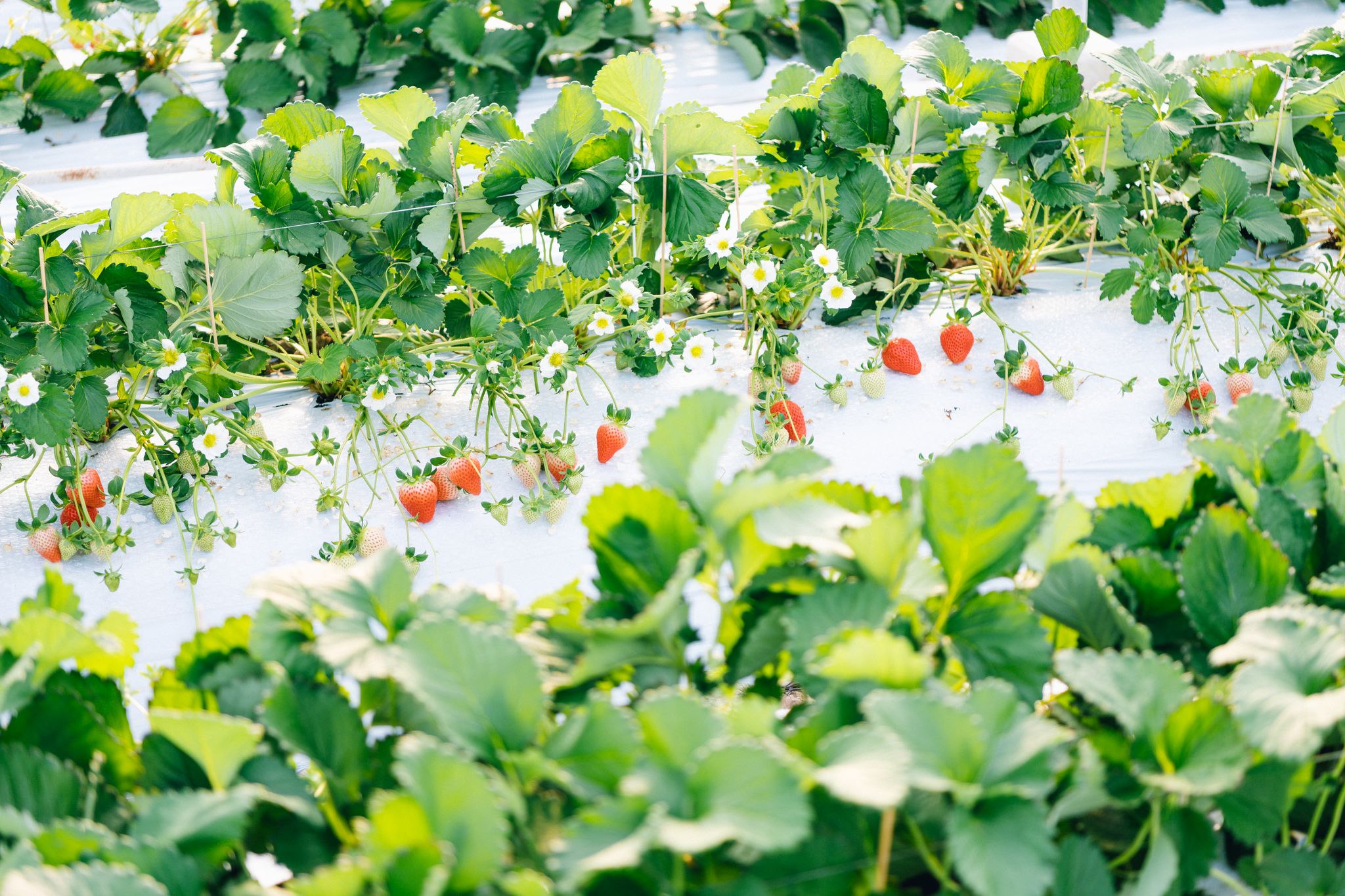 A strawberry farm in Kumamoto. The Kumamoto prefecture is well known for many natural phenomenons, including the mountains of Aso, and the grasslands around Aso city. The prefecture cultivates a wide variety of agricultural products, such as rice, watermelons, dekopon (pomelo), and tomatoes.
A strawberry farm in Kumamoto. The Kumamoto prefecture is well known for many natural phenomenons, including the mountains of Aso, and the grasslands around Aso city. The prefecture cultivates a wide variety of agricultural products, such as rice, watermelons, dekopon (pomelo), and tomatoes.
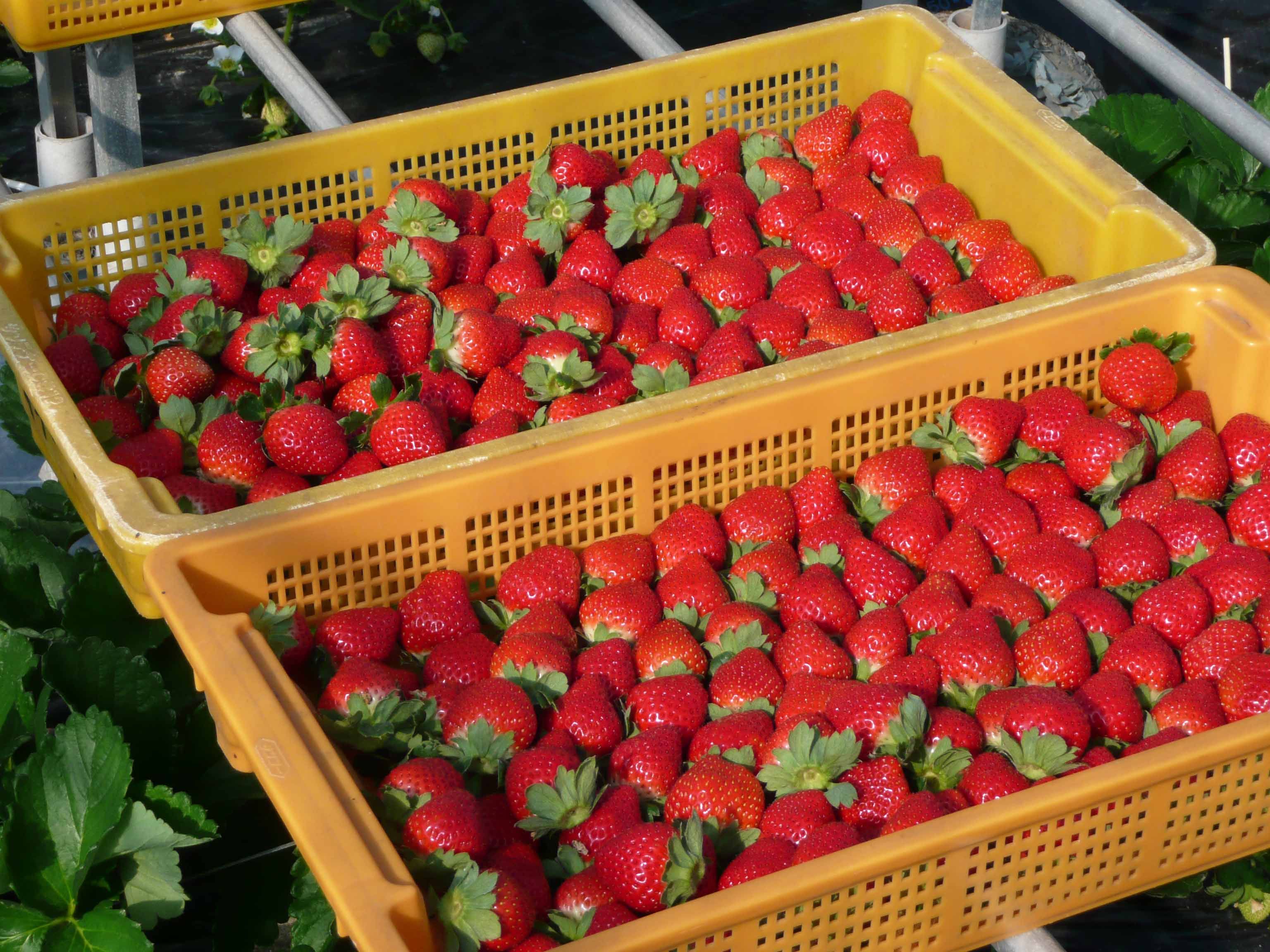 Freshly picked ‘Yūbeni’ strawberries from a farm in Kumamoto.
Freshly picked ‘Yūbeni’ strawberries from a farm in Kumamoto.
How to pick the freshest Japanese strawberries
If you’re keen on trying these berry-licious strawberries, you won’t actually have to travel some 5,200km to Japan just to get a taste.
The ‘Yūbeni Ichigo’ strawberries from Kumamoto are now available in Singapore’s supermarkets, specifically, the average Singaporean’s favourite Japanese megastore – Don Don Donki.
The strawberries can be found at the fruits section of Don Don Donki outlets, nestled among many other Japanese goods.
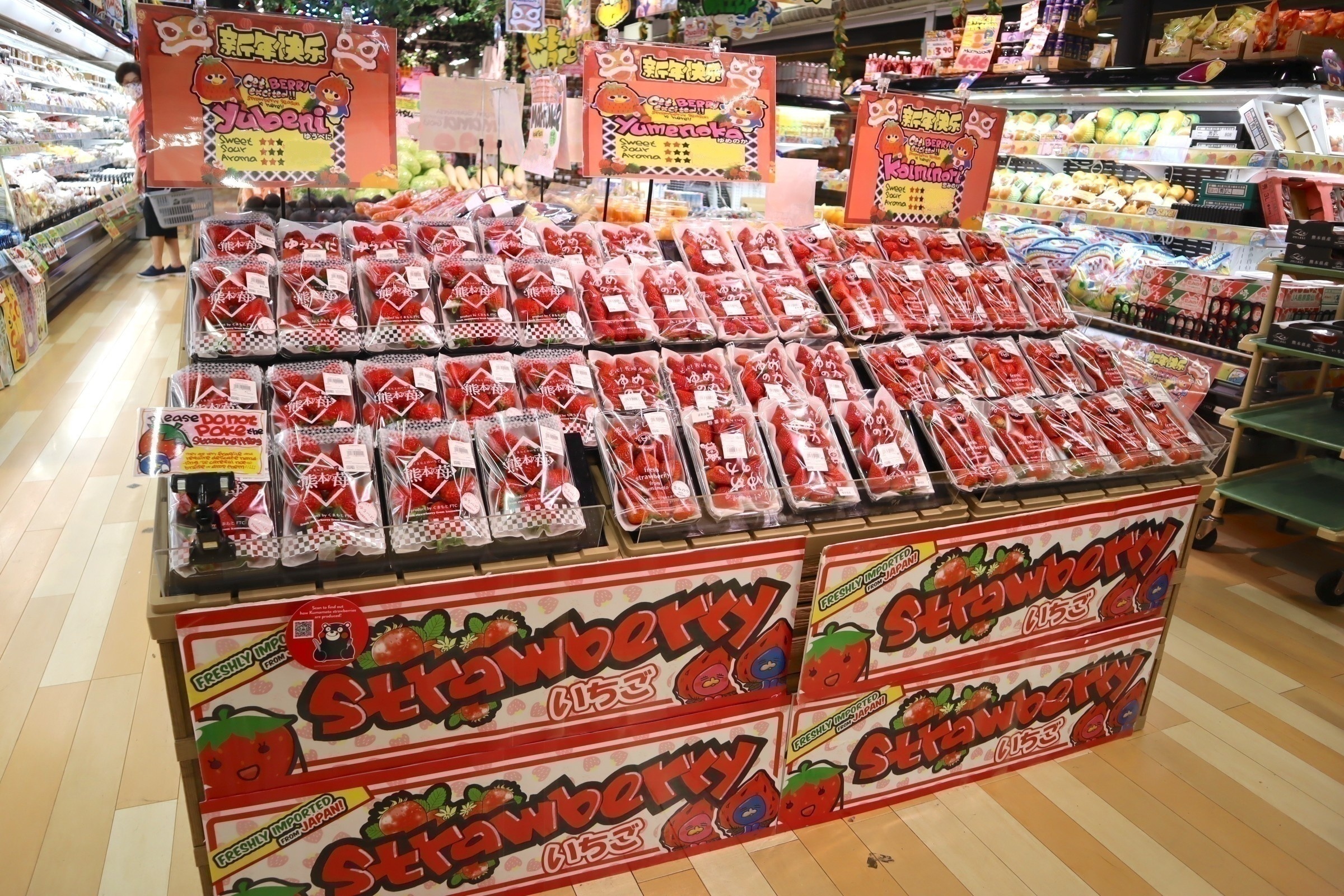 Japanese fruit section at Don Don Donki’s Farrer Park outlet
Japanese fruit section at Don Don Donki’s Farrer Park outlet
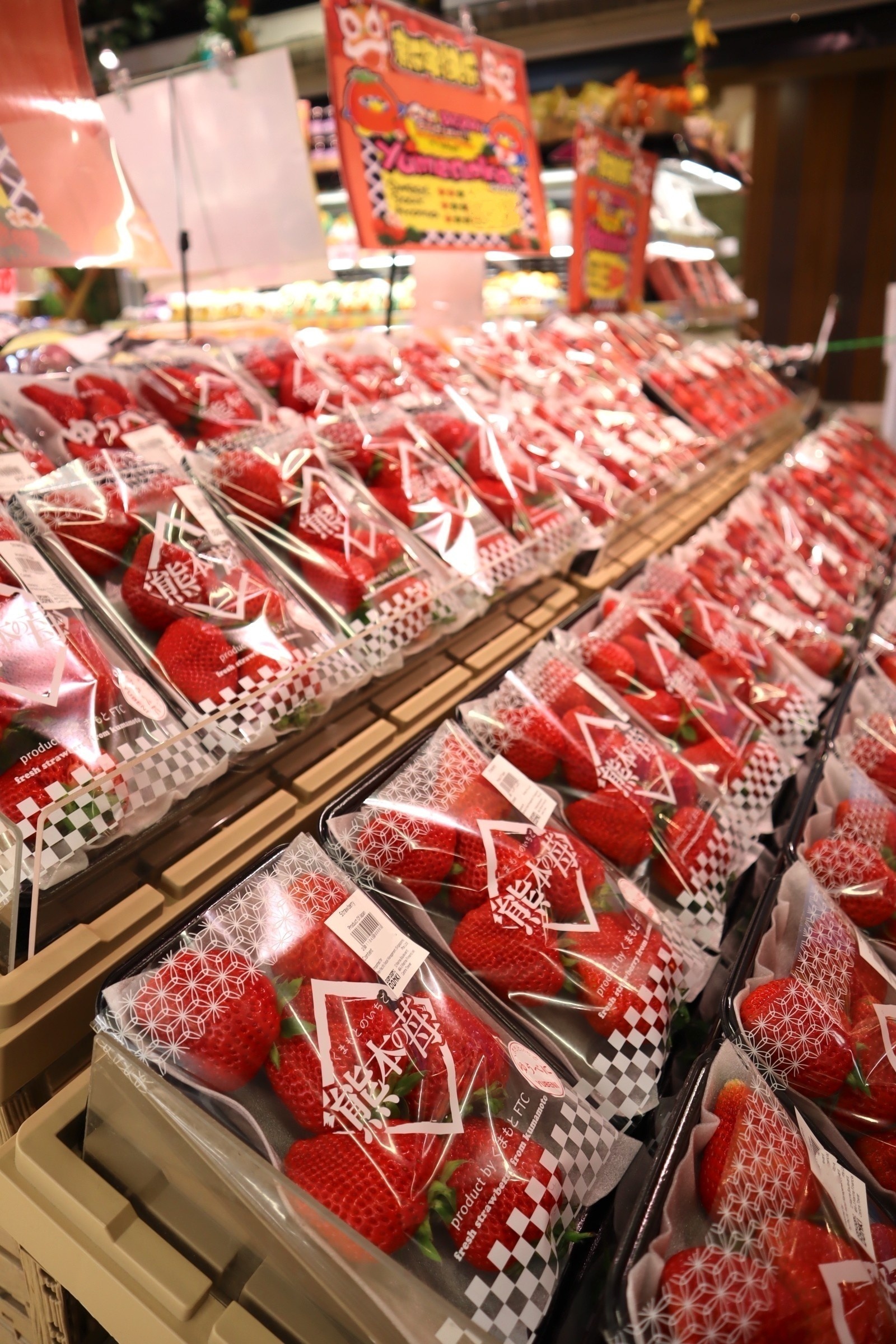 Look for the tag “Kumamoto Strawberry”. Note that the prices vary according to the type of strawberry variety.
Look for the tag “Kumamoto Strawberry”. Note that the prices vary according to the type of strawberry variety.
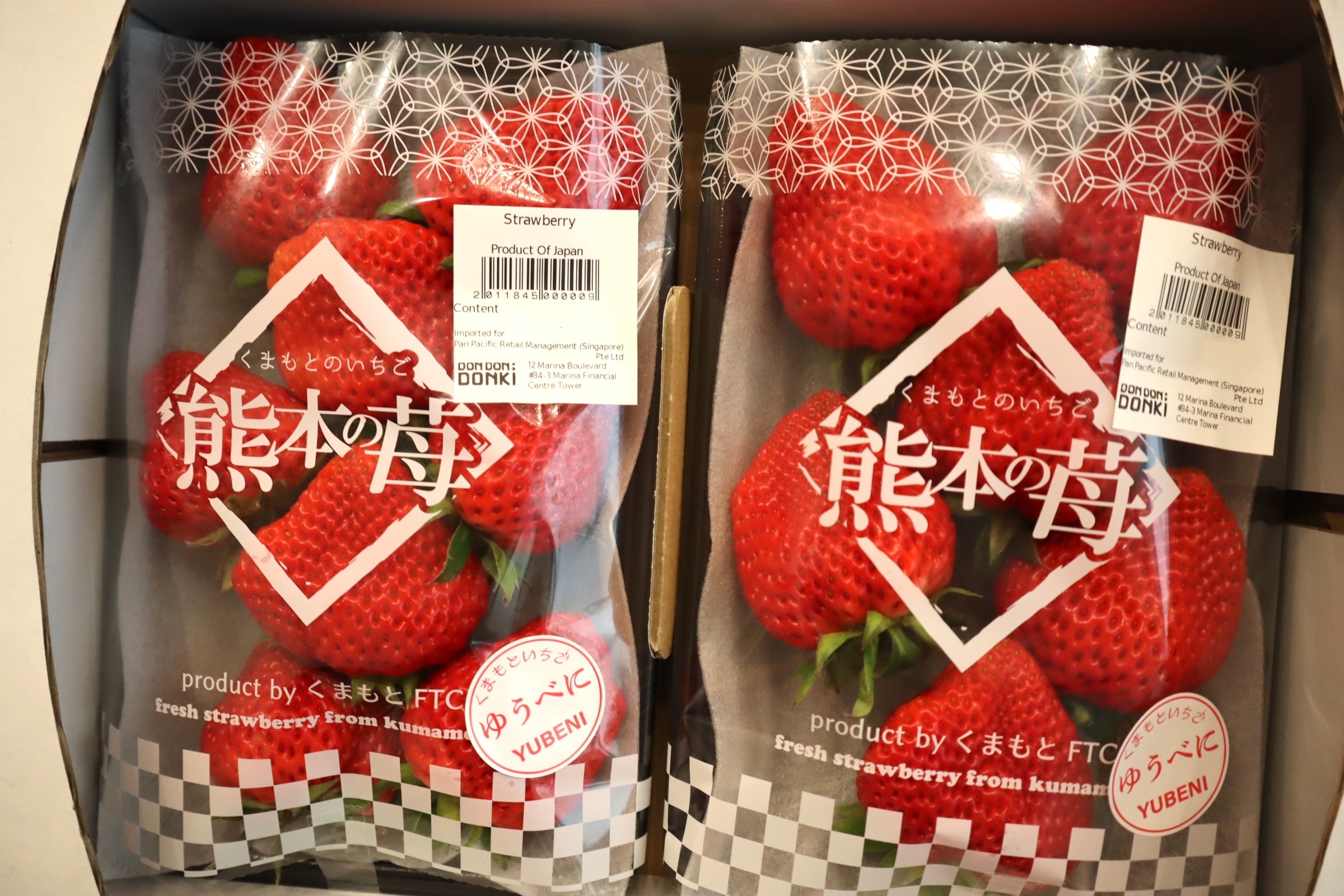 The ‘Yūbeni Ichigo’ strawberries on display.
The ‘Yūbeni Ichigo’ strawberries on display.
To pick the freshest Japanese strawberries, Ishino shared these tips:
- The strawberry has a glossy exterior with a firm texture.
- The strawberry has a “lively” and deep red colour. The redder it is towards the calyx (the leafy crown), the better.
- The colour of the strawberry's calyx is a rich green.
Naturally, this writer had to buy a packet to try, and was pleasantly surprised that each strawberry was really very big and round – almost as big as the palm of her hand.

It could not be polished off with a single bite — multiple bites were needed as compared to the average strawberry.
There was also a distinct fragrance coming from the packet, even before the packaging was removed.

True to form, all strawberries were very red and ripe.
Each strawberry was also packed with a lot of juice, and tasted a lot sweeter and nicer than what she was used to.
 Strawberries rinsed and ready to eat.
Strawberries rinsed and ready to eat.
For prime quality and condition, the strawberries should be consumed on the day of purchase.
A 1 bite 5 word review: Juicy sweetness in every bite.
If you’re keen on trying some Kumamoto strawberries, visit the nearest Don Don Donki outlet in Singapore. Note that the varieties sold may vary depending on availability.
Currently, the price of strawberries from the Kumamoto Prefecture at Don Don Donki range from S$12.90-S$15.90 per pack. However, prices are subject to change.
For more on the land of juicy red strawberries, you can check out Kumamoto’s farms and popular sightseeing spots virtually here.
This sponsored article by Kumamoto Prefecture made the writer seriously miss travel. Japan-Singapore VTL when?
If you like what you read, follow us on Facebook, Instagram, Twitter and Telegram to get the latest updates.
